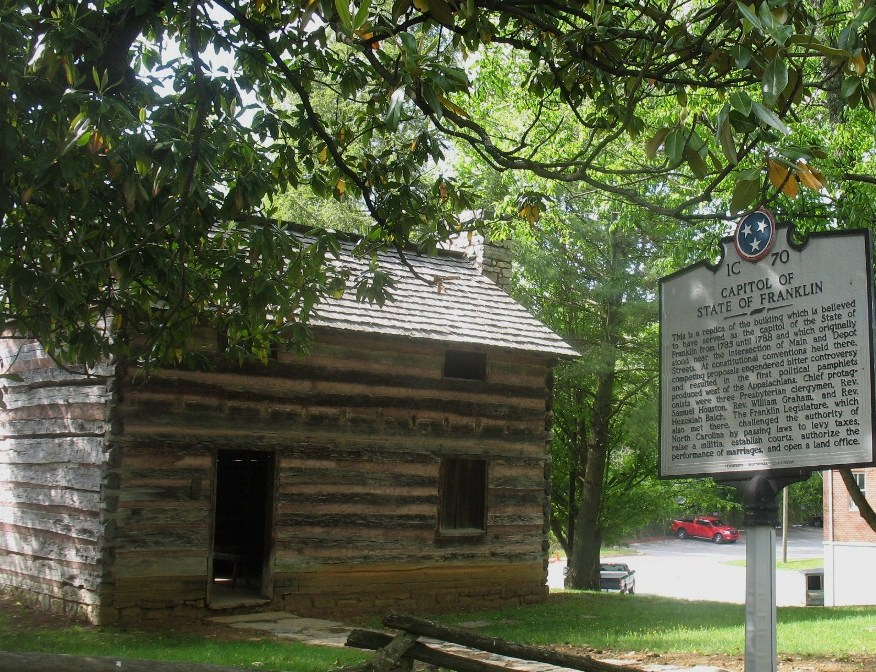Richard Caswell, Surveyor and Father of North Carolina
Many of our founding fathers started their careers as surveyors. Along with providing an essential service, surveying was a very profitable trade in eighteenth century America. Surveyors would purchase newly opened land from the Crown and sell tracts to settlers at higher prices. This led to some resentment and suspicion by settlers – but one surveyor remained popular throughout his surveying career – and beyond.
Everything started with surveying
Richard Caswell was born in Maryland in 1729 and named after his father, a prominent businessman and military leader. Caswell studied surveying, and at age 17, was appointed as an apprentice to Surveyor General of North Carolina, James Mackilwean. By 1752, he was married to Mackilwean’s daughter and had become the deputy surveyor of the colony. He helped establish the town of Kingston, North Carolina and surveyed the town layout. Caswell Street in present-day Kinston* links the streets' names honoring the families of his wives: Mackilwean Street for the family of the then-deceased Mary Mackilwean and Heritage Street for the family of his then current wife, Sarah. During this time, he earned the reputation as a reliable surveyor and commanding leader[1].
*Caswell changed the name of Kingston to Kinston when he sided with the patriots during the Revolutionary War.
Law and service
His thorough understanding of surveying led him to pursue a career in law. He was admitted to the bar in 1754 and immediately set up a law practice in Hillsboro, North Carolina. That same year, he was chosen by the people of North Carolina to participate in the North Carolina Colonial Assembly, where he served until 1771, when his political views made it impossible for him to support King George. Soon after, he became an active member in the colonial militia.[2]
In 1774 he was chosen to represent North Carolina at the First Continental Congress where he was vocally pro-independence at a time when many delegates were simply hoping to get better treatment from the Crown and resisted breaking away. John Adams said of him “We always looked to Richard Caswell for North Carolina, he was a model man and a true patriot.”
Military leadership
Caswell was also appointed to command the Minuteman region around New Bern, North Carolina and in 1776, he led the Patriot force at the key Battle of Moore’s Creek Bridge, achieving a victory that solidified Patriot control of North Carolina and emboldened the Second Continental Congress to vote for independence[3].
Two of Caswell’s sons also fought in the Revolutionary War, and his son Richard, a lieutenant colonel, was lost at sea in 1784. His son William was a brigadier general during the war.
Governor Caswell
During 1775-1777, Caswell was presiding over North Carolina’s Fourth Provincial Congress and was instrumental in writing North Carolina’s state constitution. These duties prevented him from participating in the drafting and signing of the Declaration of Independence, even though he was again representing North Carolina at the Second Continental Congress. In 1776, he was appointed acting governor of North Carolina and then elected governor in 1777, the first of three consecutive one-year terms.[1]
Crisis diplomacy
After serving as Governor, he stepped down to again command the militia as a Major General. He also served as Comptroller (treasurer) and as a member of the North Carolina senate. In 1787, Caswell was again elected to serve as Governor. Although the War of Independence was over, this period was fraught with struggle for both the new nation and the new state. In the years before Caswell became governor again, the territories west of the Blue Ridge had split from the state and formed the new state of Franklin, named after Benjamin Franklin, who disavowed any knowledge of or interest in the new state. The previous Governor had pursued a policy of force and intimidation to coerce the Franklinites to rejoin North Carolina. Caswell took a more diplomatic approach. With diplomacy and skilled negotiations, Caswell prevented civil war and the State of Franklin again reunited with North Carolina. In 1789, these lands were ceded to the Union and became the state of Tennessee.[1]
He gave it all
In 1787, Caswell was chosen to serve as one of North Carolina’s delegates to the United States Constitutional Convention, but he was too sick to attend. On November 8, 1789, Caswell suffered a fatal stroke while speaking to the state senate in Fayetteville and died two days later at the age of sixty.
Many of our founding fathers started their careers as surveyors which established their reputations as “model men” within the community, and prepared them to lead a new nation. Thank you, surveyors!




